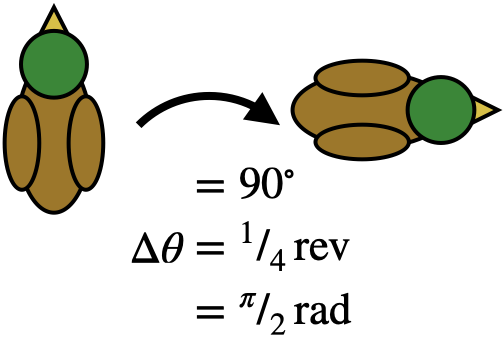1.
Angular Displacement
- Angular displacement
$\Delta\theta \Longrightarrow \Delta x$ - Angular velocity
$\omega \Longrightarrow v$ - Angular acceleration
$\alpha \Longrightarrow a$ - Torque
$\tau \Longrightarrow F$
The motion of spinning objects can be studied using most of the same tools that we use to study moving objects. We just need to replace every linear kinematic variable with its corresponding angular variable.

Angular displacement, written as $\Delta\theta$, is the amount by which an object has been turned. Unlike linear displacement $\Delta x$, it can be measured in several different units:
- The unit you may be most familiar with is degrees. There are 360° in a circle, and 90° in a right angle. You should always include the ° symbol when talking about degrees.
- We can also talk about the number of times an object has spun around, which is revolutions (rev). A wheel which has turned 10 times has undergone $\Delta\theta=10\,\u{rev}$, while a right angle is 1/4 rev.
- Mathematicians like to measure angles in terms of radians. One complete revolution is $2\pi$ radians, which we write as $\Delta\theta=2\pi$ or $2\pi\u{rad}$. (The "rad" is optional and is the default if no units are given.) We'll explain why this is is so popular in Linear & Angular Motion later in this chapter.